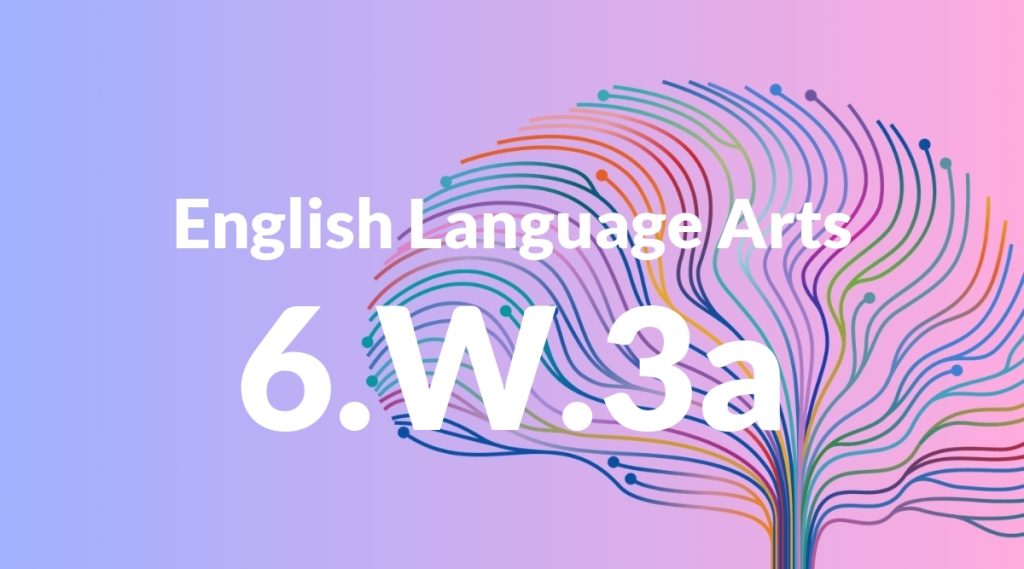Standard: 6.W.3 – Write narratives to develop real or imagined experiences or events using effective technique, relevant descriptive details, and well-structured event sequences.
Grade level: Grade 6
Subject: English Language Arts
Domain: Writing
Teacher Overview
This standard focuses on helping students develop their narrative writing skills by creating stories that are well-structured and detailed. Mastery of this standard is crucial as it lays the foundation for advanced writing skills and helps students express their thoughts and creativity effectively. Students should already know how to construct basic sentences and paragraphs, and have a grasp of story elements like characters, setting, and plot.
Mastering this standard will prepare students for more advanced writing tasks, including the ability to incorporate complex narrative techniques and engage in critical revision processes.
Common Misconception 1
Some students may think that narratives need to be purely fictional. This misconception is incorrect because narratives can also include real-life experiences or a mix of both real and imagined events.
Intervention 1
To address this, teachers can encourage students to write about personal experiences and then add fictional elements to enhance the story.
Common Misconception 2
Another common misconception is that descriptive details are unnecessary. This is incorrect because descriptive details are essential for creating vivid and engaging stories.
Intervention 2
Teachers can use examples from literature to show how descriptive details contribute to the richness of a narrative and engage readers.
Prerequisite Knowledge
Students should have a basic understanding of sentence structure, grammar, and the ability to write simple paragraphs. They should also be familiar with the elements of a story such as characters, setting, and plot.
Subsequent Knowledge
After mastering this standard, students will be able to write more complex narratives with advanced techniques such as foreshadowing and flashbacks. They will also be able to critique and revise their own work and the work of others.
Instructional Activities
- Writing a short story based on a personal experience
- Creating a storyboard for a narrative
- Peer-reviewing and providing feedback on classmates’ narratives
- Using graphic organizers to plan a story
- Writing a narrative from a different point of view




